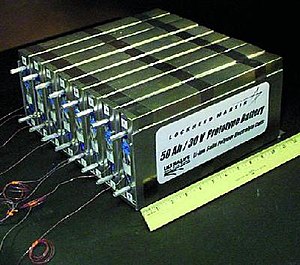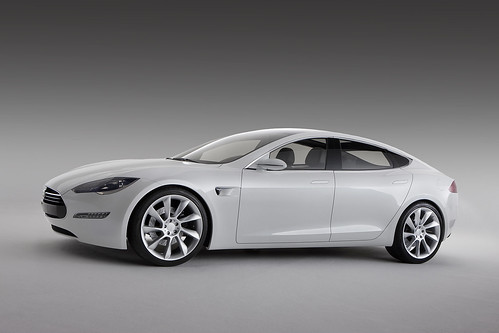Lithium Batteries in safe mode
>> Tuesday, April 28, 2009

Lithium Batteries Are Safe. The word Battery has a negative reputation of being bad for the environment and to humans. The old acid based batteries we all grew up with were harmful and we were warned not to puncture or discard them in the environment or local landfills. Auto batteries are the worst culprits for this negative perception. Most everyone knows that there is liquid acid in these cells.
What are Lithium-ion Batteries Made From?
The New Lithium-ion Batteries, however, are produced with different materials and do not use harmful acids or metals, such as lead, to store electrical power. “Lithium-ion Batteries use copper, cobalt, iron and nickel that are considered safe for landfills and incinerators,” says the Environmental Protection Agency of the US Government. Another misunderstanding is that lithium ion batteries contain lithium metal but in fact have an ionic form of lithium that is safe for disposal. We all need to understand that the new Lithium-ion batteries are safe for storing electrical energy and for disposal once the Lithium-ion batteries will no longer hold a charge.  Disposing of Lithium-ion Batteries. Does this mean that we are to fill up our landfills with Lithium-ion Batteries? For now that seems to be the case in the USA since recycling the Lithium-ion Batteries for scrap value does not amount to much, around $100 per ton. The cost of collecting, sorting and shipping used Lithium-ion Batteries to a recycling center exceeds the scrap value. Lithium-ion batteries are used in many products like watches, battery lights, cameras, battery candles, musical greeting cards and many other products that require batteries. It is estimated that we dispose of 2 billion batteries per year here in the United States. Most of these discarded batteries are the size of a dime or nickel. In the near future when the auto makers start producing electric cars like General Motor’s Volt, which will have a estimated 400 pound Lithium-ion Battery, recycling will become more profitable. Then we will be able to have a larger volume of disposal and a more efficient way to handle our battery disposal problem. The electric car industry is projected to grow six fold by the year 2013. This means that we are burning less fossil fuel and working our way to a cleaner environment.
Disposing of Lithium-ion Batteries. Does this mean that we are to fill up our landfills with Lithium-ion Batteries? For now that seems to be the case in the USA since recycling the Lithium-ion Batteries for scrap value does not amount to much, around $100 per ton. The cost of collecting, sorting and shipping used Lithium-ion Batteries to a recycling center exceeds the scrap value. Lithium-ion batteries are used in many products like watches, battery lights, cameras, battery candles, musical greeting cards and many other products that require batteries. It is estimated that we dispose of 2 billion batteries per year here in the United States. Most of these discarded batteries are the size of a dime or nickel. In the near future when the auto makers start producing electric cars like General Motor’s Volt, which will have a estimated 400 pound Lithium-ion Battery, recycling will become more profitable. Then we will be able to have a larger volume of disposal and a more efficient way to handle our battery disposal problem. The electric car industry is projected to grow six fold by the year 2013. This means that we are burning less fossil fuel and working our way to a cleaner environment.
What is the Future of Lithium Batteries?
The future of Lithium-ion Batteries is bright and valuable research is being done to improve the storing of electrical power. All these new discoveries will be positive to the environment and will allow us to finally have a cleaner way to stored energy. Similar technology will hopefully become wide spread in storing solar and wind power. United States companies have fallen behind in research achievements on the lithium-ion batteries. Asian Lithium-ion battery makers are ahead of US companies in both research and production. US companies are now asking for federal government assistance to narrow the gap that the Asian companies hold.
Lithium-ion Batteries For Battery Cars.  Tesla Motors now produces an electric sports car that will only take 3.9 seconds to reach 60 miles per hour from a dead stop. Not bad! The lithium-ion battery pack contains 6,831 cells with an overall weight of 1,000 pounds which is over twice the weight of the General Motor’s Volt. The Tesla Sports Car lithium-ion batteries will power the car for 220 miles to 244 miles. Depending on any extra electrical consumption used by the air conditioning or other optional electrically generated accessories.
Tesla Motors now produces an electric sports car that will only take 3.9 seconds to reach 60 miles per hour from a dead stop. Not bad! The lithium-ion battery pack contains 6,831 cells with an overall weight of 1,000 pounds which is over twice the weight of the General Motor’s Volt. The Tesla Sports Car lithium-ion batteries will power the car for 220 miles to 244 miles. Depending on any extra electrical consumption used by the air conditioning or other optional electrically generated accessories.



0 comments:
Post a Comment